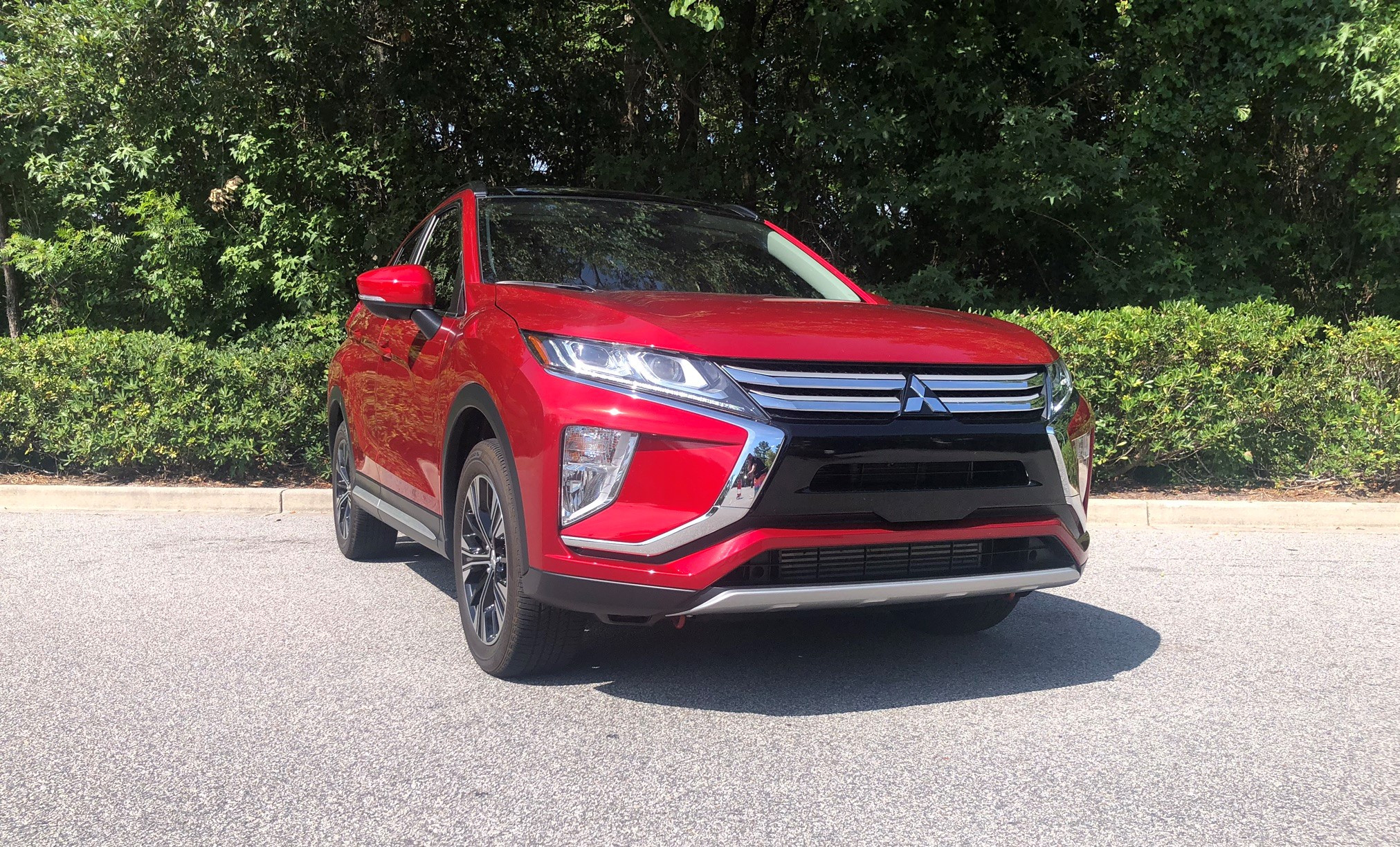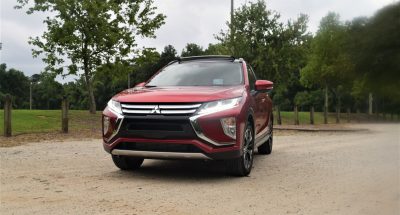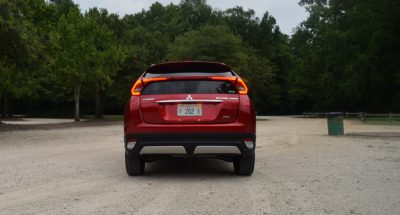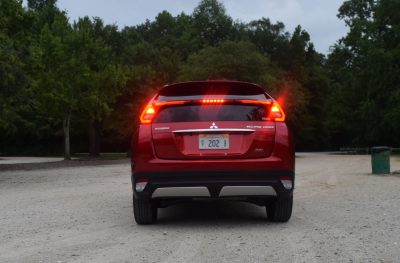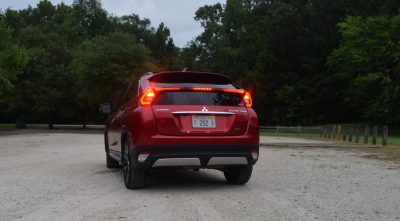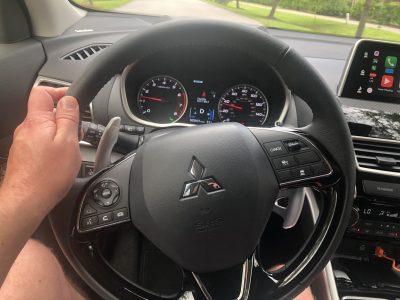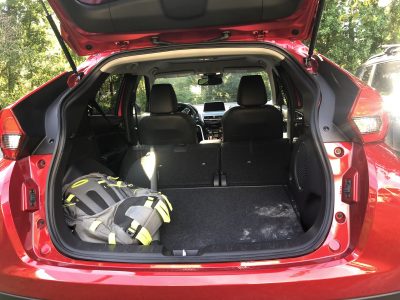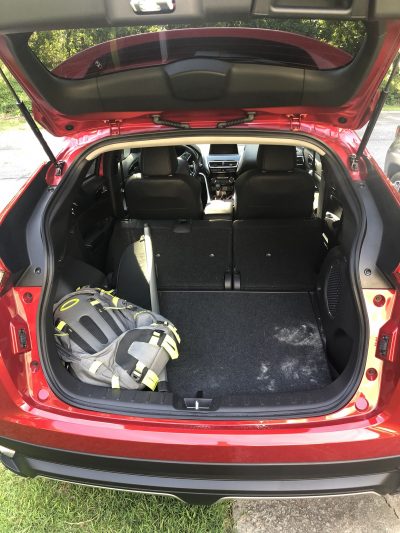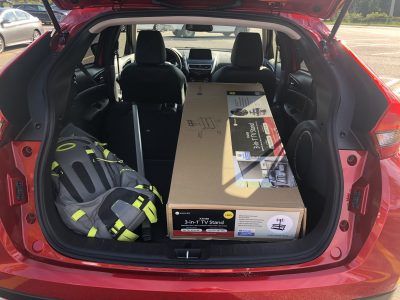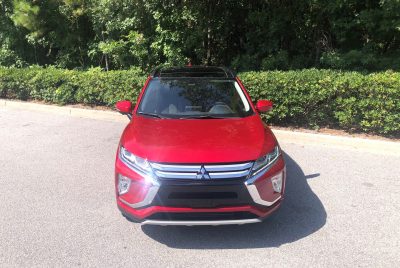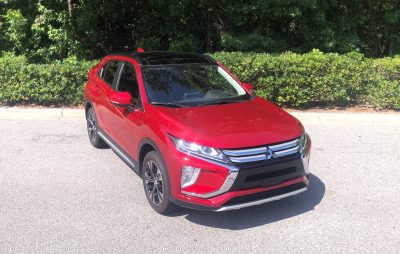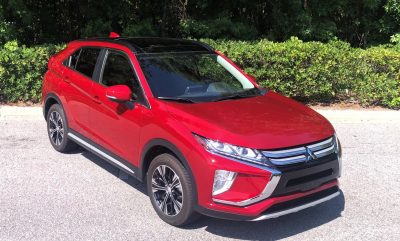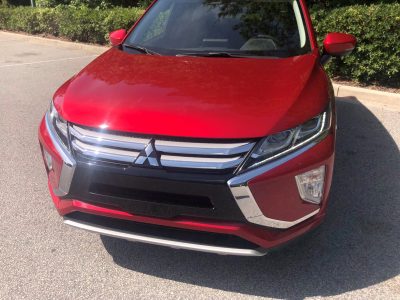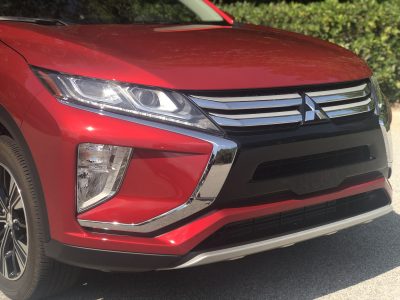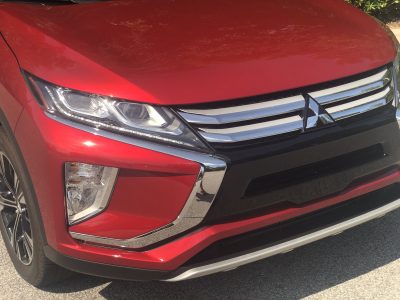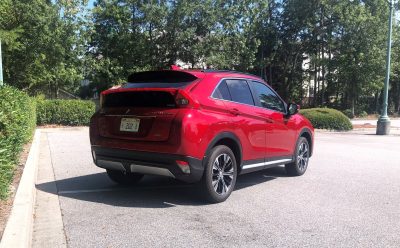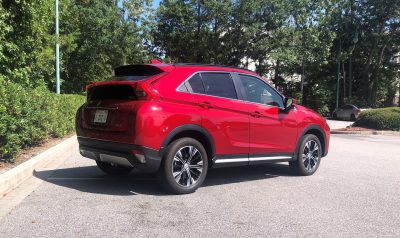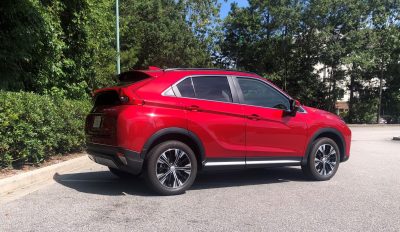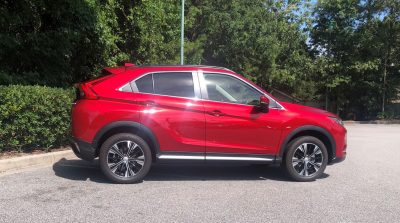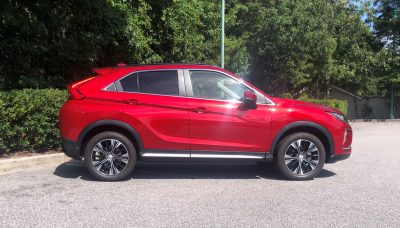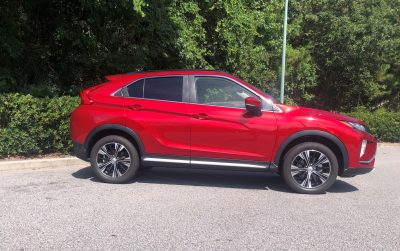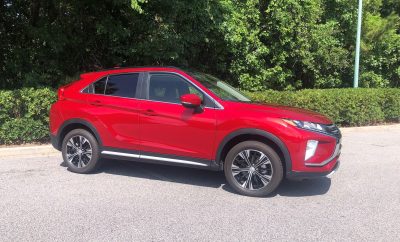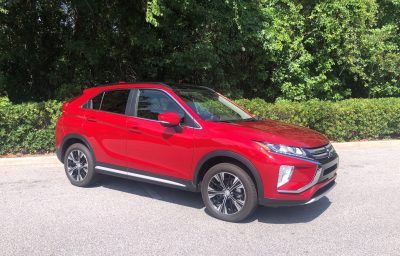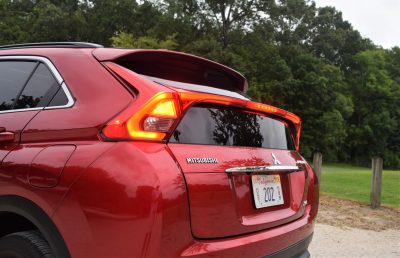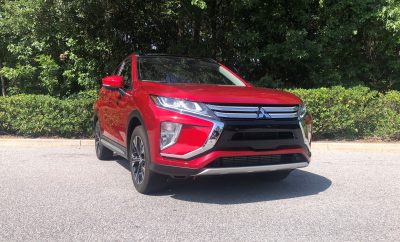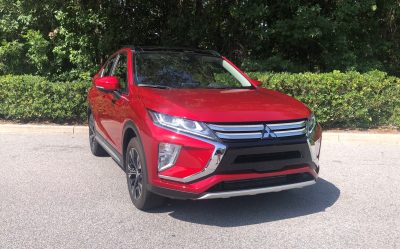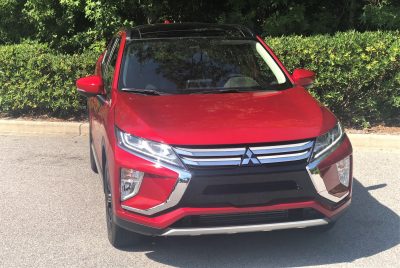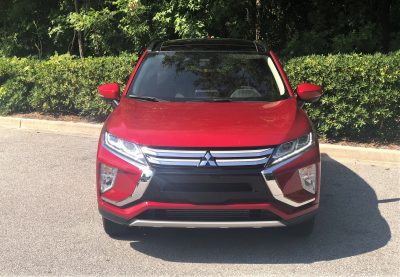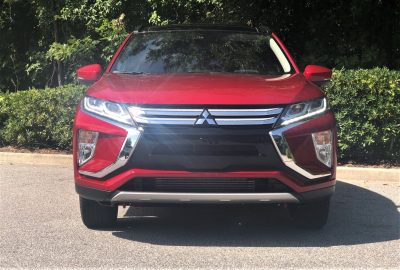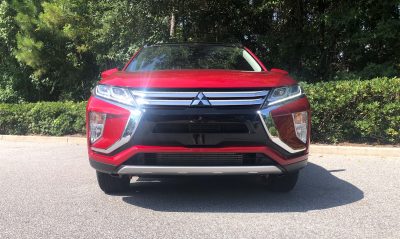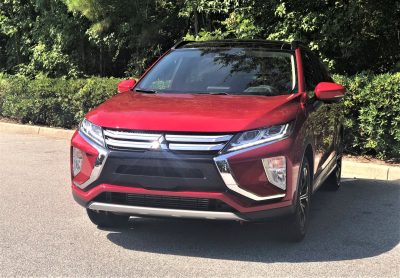Eclipse Cross is such a class-leading vehicle that it instantly moves Mitsubishi to the A-list of car brands. It is that well-equipped, feels like it has stellar build quality, and just leapfrogs most of its rivals on drive manners.
Mitsubishi gone from worst to first!!?
Perhaps we should take a step back and explain what makes the new Eclipse Cross so great.
Yes, let’s take a more mature approach to detailing how Eclipse Cross’s build quality, tech and drive manners make it one of the most sophisticated supermini SUVs available. Kick things off by watching the performance drive review video below — with some tail-out antics to open the fun!
Performance Drive Video
Exterior
The Eclipse Cross is a sexy little truck. It wears the chromy face of Mitsubishi’s latest SUV concepts but pairs it with classy LED daytime running lights that are executed with a quality unseen in this class. The angular elements of the design are a good fit for the upward-tilted lighting elements and make the nose seem both sporty and fresh on the road. And certainly more premium than its pricing might suggest! (The LED DRLs are standard only on the top trims, however.)
Is this a reverse mullet? Business in the front and party in the back?
Perhaps! The glasshouse and roofline of the Eclipse Cross instantly set it apart from the Outlander Sport, which continues one rung below the Eclipse Cross in the Mitsu lineup. The chopped rear glass has a sporty SUV-coupe style without hurting rear headroom or cargo room much.
Out back we have standard LED brake lights in a cool halo pattern around the split back glass. The upper rear glass has a steep rake while the lower portion is vertical black-tinted glass to give decent visibility to the rear even with this racy shape. Very practical way to be so stylish.
The taillights are a favorite element of the truck for their cool execution: the wrap-around glow of the red light is a nice touch that is not often seen in this segment. The lightbar effect is even more pronounced with the brake lights lit up — giving light to the central section of taillamps.
It is an overall balance of sophisticated details like the LEDs that makes for a cool pairing with the racy roofline and nimble, city-friendly dimensions.
One quirk is that the low and highbeam LEDs use the inside projector beams for both lamps — the outer projectors are falsies for the active safety tech. This makes the car seem like it has highbeams on, but we didn’t get a flash from any other drivers. Still unusual though.
Interior
Inside the cabin of Eclipse Cross is where I could not stop saying “Wow” for the entire week I was testing it out. An order of magnitude better than the refinement in any small Jeep, while the quality inside feels like a Rolls-Royce versus the new Ford EcoSport. Simply astounding upgrade versus its rivals and certainly any predecessor.
This extends to every element of the cabin, from seating comfort and drive positon to the touchpoints of the buttons. So high quality.Sayonara to the old clunky and chunky black buttons that dominated Mitsubishi interiors for so long, and hello touchscreen and power-deploying heads-up-display panel. The HUD system is fairly basic but is full-color and offers basic trip info, digital speedometer and a few other alerts when needed.
The sheer presence of a HUD is great, but to have it whir out from a protected compartment behind a hidden dashtop panel? Color me shocked.
The touchscreen is also huge and crystal clear for its integrations with CarPlay and Android Auto. A laptop-style trackpad in the center console doubles the functionality by letting you select and tap icons without stretching to reach the high-mounted screen, either. Just class-above stuff galore inside.
The one gripe we have with the audio system is certainly not volume or bass clarity! The Rockford Fosgate setup with built-in subwoofer delivers massive thump.
But changing the volume is tedious with no knob — you either do it from the steering wheel or by tapping up or down on the screen. A knob would be much simpler and faster, not to mention easier to use for beginners.
You might not expect Eclipse Cross to have such good visibility with its funky SUV-coupe roofline… but it does. Same goes for backseat room and trunk volume. We easily fit a large flatpack box back there with the seats folded.One gripe might be that the seats do not fold totally flat – there is a level change between the rear cargo floor and the floor created by the folded seat. But that is the only note.
Overall this cabin is an A on all counts.
Performance
Why was I so surprised that this little crossover was fun to drive? After all, we know Mitsubishi loves turbos and AWD systems — they got very good at them indeed from the original Eclipse and later the Lancer Evolution!
But still, most compact crossovers are as entertaining as …. a waiting room? Something with actively negative entertainment value!
This frisky little Mitsu feels quicker than the 8.5-second sprint to 60-mph would suggest thanks to its giant lump of turbo torque right off the line. And its AWD system — front-bias of course — actually pushes decent power to the back when needed! We noted in the video that we’d have guessed it can sent 15-percent of the power to the back. But after driving on sand it feels like a good 40 – 50-percent heads to the tail.
Surprise and delight, for sure, on that one.
The drive and handling are so good that you can almost forgive the CVT automatic. Yes CVTs are awful, and many enthusiasts have been trained to hate them. But this one with sport programming and giant paddle shifters manages to be a perfect torque-converter in feel for upshifts… while having CVT benefits of being super efficient, smooth and great for city driving.
Even more than the simulated upshifts (which are the best I’ve experienced in a CVT), it is the downshifts that really convinced me. Most CVTs are slow to downshift and generally put up a big fuss. Not this one. Happy to snap itself down to a lower band when needed — as determined by a floored throttle or a pull of the shift paddles.
Although purists might scoff, the paddle shifters would be handier if they still let the car kick down after you’d played around. I found myself a few times having selected a ‘gear’ manually and then a few minutes later been flooring the car to merge, or something, and being annoying that it wouldn’t kick down. Clearly operator error… but still.
Pricing
Eclipse Cross slides in above Outlander Sport in the range and has pricing from about $22k upwards. There are various trim levels with increasing levels of kit, up to our SEL Premium S-AWC model and its all-in $32k pricing. The blacked-out style for the wheels on some mid-spec models is drool-worthy.
Getting the sharp LED daytime running lights takes about mid-spec or above to get but they seem worth it to our eyes, even without the top LED low/high beams of the flagship test model.
Summary
It seems really harsh to say this aloud, but until driving the new Eclipse Cross we’d long considered Mitsubishi a B-team player in the auto biz. Its vehicles ranged from mediocre (Outlander) to woeful (Mirage). With the Evo‘s retirement from the lineup the brand itself was slipping into C-team status.
The fate of Isuzu and Suzuki seemed inevitable for Mitsu too with such uncompetitive vehicles.
But this Eclipse Cross is a bolt of lightning – a flash of genius. This subcompact crossover shoots to the top of its class on merits alone — besting vehicles like the Jeep Compass and Renegade, Toyota C-HR, Honda HR-V and many others.
Take one for a spin and you too will be amazed at what a great machine the Eclipse Cross is.

Tom Burkart is the founder and managing editor of Car-Revs-Daily.com, an innovative and rapidly-expanding automotive news magazine.
He holds a Journalism JBA degree from the University of Wisconsin – Madison. Tom currently resides in Charleston, South Carolina with his two amazing dogs, Drake and Tank.
Mr. Burkart is available for all questions and concerns by email Tom(at)car-revs-daily.com.

